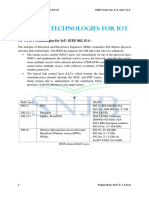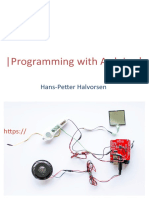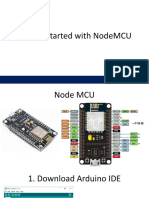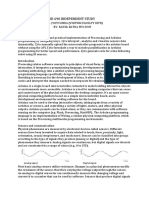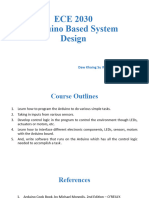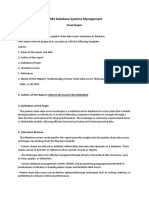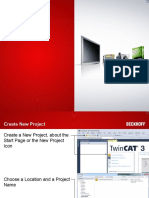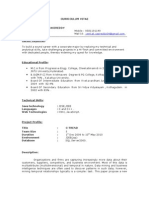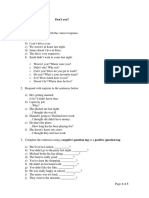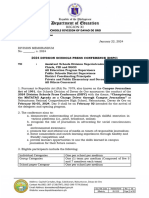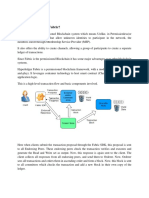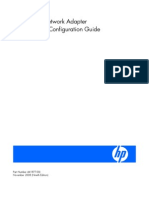100% found this document useful (2 votes)
485 views35 pagesEsp32 For Iot Applications
This document provides an introduction to using the ESP32 microcontroller for IoT applications. It discusses installing the necessary software, the ESP32 specifications and pinout, basic functions like digitalRead() and analogWrite(), and examples of connecting common sensors like a PIR sensor, servo motor, DHT11 temperature and humidity sensor, ultrasonic sensor, and potentiometer. The document is intended as training for an ESP32 session that will cover these topics over multiple parts.
Uploaded by
Divyesh DehuryCopyright
© © All Rights Reserved
We take content rights seriously. If you suspect this is your content, claim it here.
Available Formats
Download as PDF, TXT or read online on Scribd
100% found this document useful (2 votes)
485 views35 pagesEsp32 For Iot Applications
This document provides an introduction to using the ESP32 microcontroller for IoT applications. It discusses installing the necessary software, the ESP32 specifications and pinout, basic functions like digitalRead() and analogWrite(), and examples of connecting common sensors like a PIR sensor, servo motor, DHT11 temperature and humidity sensor, ultrasonic sensor, and potentiometer. The document is intended as training for an ESP32 session that will cover these topics over multiple parts.
Uploaded by
Divyesh DehuryCopyright
© © All Rights Reserved
We take content rights seriously. If you suspect this is your content, claim it here.
Available Formats
Download as PDF, TXT or read online on Scribd
/ 35





















